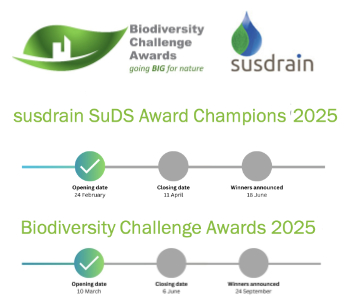Design for Manufacture and Assembly (DfMA)
[edit] What is Design for Manufacture and Assembly?
Design for Manufacture and Assembly (DfMA) is a design approach that focuses on ease of manufacture and efficiency of assembly. By optimising the design of a product it is possible to manufacture and assemble it more efficiently, more quickly, more safely and at a lower cost.
Traditionally, DfMA has been used in sectors such as the automotive industry and for consumer products, both of which need to produce high quality products in large numbers. More recently, construction contractors have begun to adopt DfMA for the off-site prefabrication and on-site construction of components such as concrete floor slabs, structural columns, beams, and so on.
NB DfMA Overlay to the RIBA Plan of Work, Mainstreaming Design for Manufacture and Assembly in Construction, 2nd Edition, published by the RIBA in 2021, suggests that: ‘DfMA is a formal design approach that focuses on designing for ease and efficiency of manufacture and assembly. It is a prerequisite for considering modern methods of construction, especially offsite solutions. It extends the business-as-usual focus of building design to resolve designs in terms of how efficiently they can be manufactured and assembled on site.’
[edit] What are the processes involved in Design for Manufacture and Assembly?
Design for Manufacture and Assembly combines two primary methodologies – Design for Manufacture (DFM) and Design for Assembly (DFA):
[edit] Design for Manufacture (DFM)
Design for Manufacture involves designing for the ease of manufacture of a product’s constituent parts. It is concerned with selecting the most cost-effective materials and processes to be used in production, and minimising the complexity of the manufacturing operations.
[edit] Design for Assembly (DFA)
Design for Assembly involves designing for a product’s ease of assembly. It is concerned with reducing the product assembly cost and minimising the number of assembly operations.
Both DFM and DFA seek to optimise design while reducing materials, overheads, and labour costs.
[edit] What are the principles of Design for Manufacture and Assembly?
In a similar approach to lean construction, applying DfMA enables the identification, quantification and elimination of waste or inefficiency in product manufacture and assembly. It can also be used as a benchmarking tool to study the products of competitors.
The main principles of DfMA are:
- Minimise the number of components, and in so doing, reducing assembly and ordering costs, reducing work-in-process, and simplifying automation.
- Design for ease of part-fabrication. - simplifying the geometry of parts and avoiding unnecessary features.
- Tolerances - parts should be designed to be within process capability.
- Clarity - components should be designed so they can only be assembled in one way.
- Minimise the use of flexible components - parts made of rubber, gaskets, cables and so on, should be limited as handling and assembly is generally more difficult.
- Design for ease of assembly - for example, the use of snap-fits and adhesive bonding rather than threaded fasteners such as nuts and bolts. Where possible a product should be designed with a base component for locating other components quickly and accurately.
- Eliminate or reduce required adjustments - designing adjustments into a product means there are more opportunities for out-of-adjustment conditions to arise.
[edit] What are the advantages of Design for Manufacture and Assembly?
Some of the main advantages of Design for Manufacture and Assembly include:
- Speed: One of the primary advantages of DfMA in construction is the significantly reduced programme on-site through the use of prefabricated elements.
- Lower assembly cost: By using fewer parts, decreasing the amount of labour required, and reducing the number of unique parts, DfMA can significantly lower the cost of assembly.
- Higher quality and sustainability: A highly automated approach can enhance quality and efficiency at each stage. There may also be less waste generation in the construction phase, greater efficiency in site logistics, and a reduction in vehicle movements transporting materials to site.
- Shorter assembly time: DFMA shortens assembly time by using standard assembly practices such as vertical assembly and self-aligning parts. It also ensures that the transition from the design phase to the production phase is as smooth and rapid as possible.
- Increased reliability: DfMA increases reliability by lowering the number of parts, and so decreasing the chance of failure.
- Safety: By removing construction activities from the site and placing them in a controlled factory environment there there are fewer opportunities for safety issues to arise.
[edit] What is the platform approach to design for manufacture and assembly (P-DfMA)?
In November 2018, as part of the National Infrastructure and Construction Pipeline 2018, the government committed to increasing the use of prefabrication and other off-site construction methods on public projects. Details of a preferred approach were published, called 'Platform Approach to Design for Manufacture and Assembly' (P-DfMA).
The government are pushing for a digitally-designed set of components to be used 'wherever possible' across a range of government construction programmes and projects. These components should be manufactured in factories and assembled on site. The Treasury believes that adopting this approach can boost productivity whilst also reducing waste by up to 90%.
Exchequer secretary to the Treasury, Robert Jenrick said; “Over the course of this Parliament, investment in economic infrastructure will reach the highest sustained levels in over 40 years. And as the pace of technological change accelerates, we are stepping up our commitment to digital infrastructure, use of data to drive greater productivity and embrace new methods of construction. With £600bn of investment over the next decade, including the largest ever investment in our strategic road network, we are taking the long term action required to raise productivity and ensure the economy is fit for the future.”
For more information see: Platform approach to design for manufacture and assembly.
[edit] PAS 8700
PAS 8700:2025, Modern methods of construction for new build residential properties – Specification, Draft v 3.9, published by bsi in 2024, defines design for manufacture and assembly (DfMA) as a: ‘….process and culture that focuses on ease and efficiency of manufacture and assembly.’
It suggests that:
- NOTE 1 This is a prerequisite for off-site construction and MMC. DfMA emphasizes two considerations: how a component is manufactured and how it is assembled into a product that can be tailored to varying degrees in a process known as mass customization. DfMA is not only a technical process but also a culture that can be seen as an extension or evolution of designers’ ordinary ways of working. A manufacturing mindset needs to be embedded early in the project and, wherever possible, translated into a programme-wide approach.
- NOTE 2 DfMA is often linked to digitization, automation and earlier engagement between disciplines, and requires good knowledge of manufacturing processes and logistics to succeed. It is important that the project team includes sufficient experience and knowledge of DfMA relevant to the project scale and type to deliver the best solution’
[edit] Related articles on Designing Buildings
- Advanced manufacturing,
- BSRIA launches Offsite Construction for Building Services topic guide.
- Construction consolidation centre (CCC).
- Design for deconstruction.
- Design for maintenance.
- Lean construction.
- Modern methods of construction.
- Modular buildings.
- Off-site manufacturing.
- Offsite manufacturing and standardised design.
- Off-site construction.
- Off site materials.
- Off-site prefabrication of buildings: A guide to connection choices.
- Platform approach to design for manufacture and assembly.
- Prefabrication.
- Pre-manufactured value.
Featured articles and news
Focussing on the practical implementation of electrification.
Sustainable Urban Drainage and Biodiversity
Awards for champions of these interconnected fields now open.
Microcosm of biodiversity in balconies and containers
Minor design adaptations for considerable biodiversity benefit.
CIOB student competitive construction challenge Ireland
Inspiring a new wave of Irish construction professionals.
Challenges of the net zero transition in Scotland
Skills shortage and ageing workforce hampering Scottish transition to net zero.
Private rental sector, living standards and fuel poverty
Report from the NRH in partnership with Impact on Urban Health.
.Cold chain condensing units market update
Tracking the evolution of commercial refrigeration unit markets.
Attending a conservation training course, personal account
The benefits of further learning for professsionals.
Restoring Alexander Pope's grotto
The only surviving part of his villa in Twickenham.
International Women's Day 8 March, 2025
Accelerating Action for For ALL Women and Girls: Rights. Equality. Empowerment.
Lack of construction careers advice threatens housing targets
CIOB warning on Government plans to accelerate housebuilding and development.
Shelter from the storm in Ukraine
Ukraine’s architects paving the path to recovery.
BSRIA market intelligence division key appointment
Lisa Wiltshire to lead rapidly growing Market Intelligence division.
A blueprint for construction’s sustainability efforts
Practical steps to achieve the United Nations Sustainable Development Goals.
Timber in Construction Roadmap
Ambitious plans from the Government to increase the use of timber in construction.
ECA digital series unveils road to net-zero.
Retrofit and Decarbonisation framework N9 launched
Aligned with LHCPG social value strategy and the Gold Standard.

























Comments
To make a comment about this article, click 'Add a comment' above.
Separate your comments from any existing comments by inserting a horizontal line.
Is modular construction just a way for manufacturers from outside the UK to take over the industry. It must be cheaper to make a modular building in india or china than it is here.